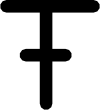In the history of writing systems, it is not uncommon for people create writing systems based on dreams or visions. It is also not uncommon for writing systems to have particular religious significance. It *is* somewhat rare for people to worship a writing systems, but Sora Sompeng shows there is at least one.
Before 1936 AD, the Sora language — an Austro-Asian language spoken in east central India –was written with either the Oriya, Latin, or Telugu scripts. In 1936 AD, Mangei Gomango, the son-in-law of a charismatic community leader, had a vision of the 24 characters of the Sora Sompeng script. From there, he founded a religious group to worship “Akshara Brahma”, the Alphabetic Image of God. Nowadays, the script is mostly used for religious works, adult education, and ceremonial uses (e.g. wedding invitations), but it isn’t used much; Sora is principally a spoken language.
The 24 characters are named after the 24 gods in the Sora pantheon. There is not a strict one-to-one correspondence between sounds and characters in the script; there are more sounds than characters. Perhaps if there had been more gods in the Sora pantheon, there might be enough characters for each sound.
Sora Sompeng is an abugida that has abjad elements (not always showing vowels) and some alphabetic elements (showing vowels with separate characters instead of diacritics). There is a default vowel attached to every consonant, but there is no vowel-killing symbol like the virama, nor vowel-killing consonant clusters; the reader has to figure out from context if there is a vowel there or not. To get a different vowel than the default, a vowel character is written.
Links: Wikipedia, Omniglot, Unicode proposal










